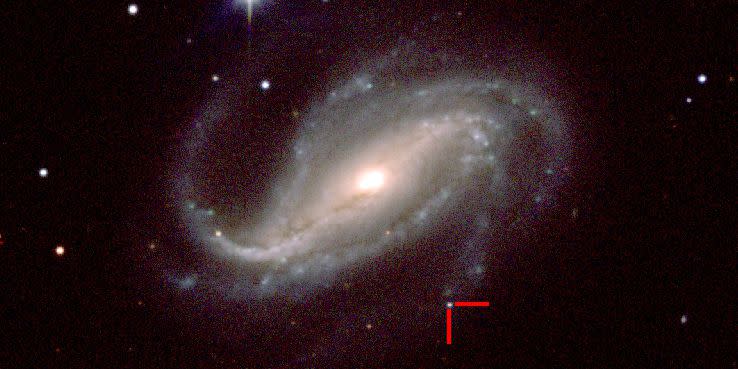Amateur Astronomer Captures Supernova First Light

An amateur astronomer in Argentina has done something no scientist has ever been able to do - capture the first burst of light from the supernova explosion of a massive star.
Víctor Buso of Rosario, Argentina, the country's third-most populous city, was testing a new camera on his 16-inch telescope on September 16, 2017. He focused on the spiral galaxy NGC 613, which is approximately 80 million light-years from Earth and can be found within the southern constellation Sculptor.
Although an amateur observer of the night sky, Buso has a lifelong passion for the stars. He was inspired as a child when he saw Neil Armstrong land on the moon in 1969, and the next year he witnessed the Bennett comet fly over the Argentinian. Buso tells the Washington Post that he began building his own telescopes at age 11 using tin cans, magnifying lenses, and Play-Doh. On the night in question, Buso, a 58-year-old locksmith, was using something more advanced: a 40-centimeter telescope housed in an astronomy tower that he built on his roof, affectionately dubbed Observatorio Busoniano.
Taking a series of short-exposure photographs, he noticed a muted point of light. It appeared to be brightening near the end of a spiral arm, previously invisible in the first set of photographs. The speck was just a pixel of light, but a pixel that hadn't appeared in any prior photos. Buso, a self-taught astronomer, hadn't seen anything like it before and, as it turns out, neither had any other astronomer in history.
“I thought, ‘Oh, my God, what is this?’ he tells the Post.
Eventually, his photos found their way to Melina Bersten, an astrophysicist at the Argentine Institute of Astrophysics of La Plata. “We immediately noticed this was an incredibly important discovery,” Bersten says. “Given that we don’t know where and in which moment a supernova is going to explode, it is very easy to lose this very fast early phase.”
“Professional astronomers have long been searching for such an event,” said UC Berkeley astronomer Alex Filippenko, who followed up the discovery with observations and a detailed analysis of the explosion, which is now called SN 2016gkg. “Observations of stars in the first moments they begin exploding provide information that cannot be directly obtained in any other way.”
Scientists estimate that the chances of Buso making the discovery were one in 10 million, possibly one in 100 million. Seeing the very first light of a supernova will allow scientists to better track the explosion throughout its evolution.
“Buso’s data are exceptional,” says Fillppenko. “This is an outstanding example of a partnership between amateur and professional astronomers."
2018 has been a good year for amateur scientists. Earlier this year, an amateur paleontologist discovered some of the most concrete evidence ever seen of early mammals and dinosaurs interacting together.
If you were thinking about buying a telescope and mounting it on your roof, now might be the time.
Source: University of California, Berkeley
You Might Also Like

